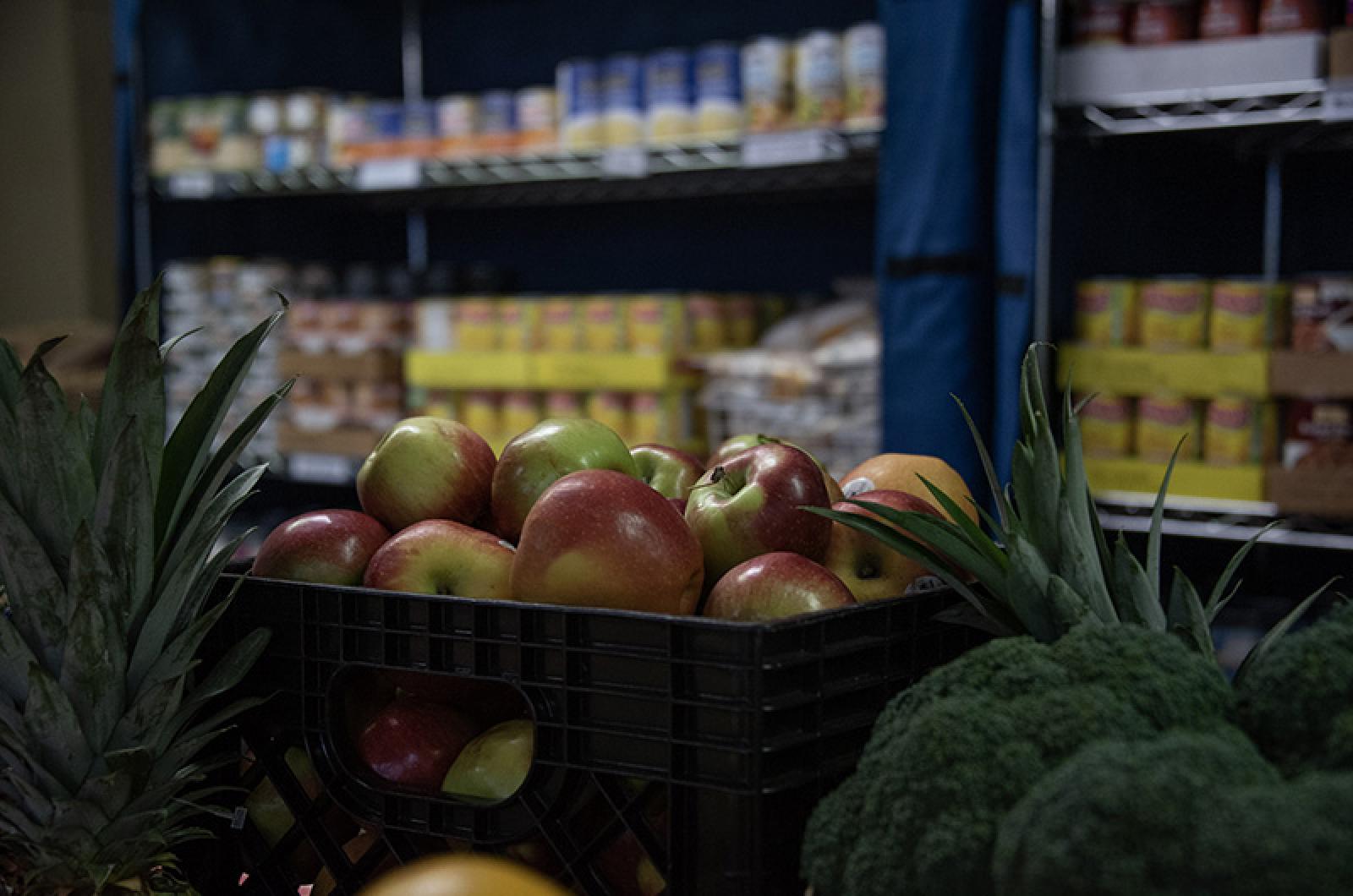People on Martha’s Vineyard are receiving food aid in numbers that local agencies have never seen before. The Island Food Pantry passed a milestone in January, serving more than 1,000 Vineyard residents for the first month in its nearly 40-year existence.
“We had 53 per cent more visits than in January, 2019,” executive director Kayte Morris told the Gazette this week.
“That nets out to about 700 visits to the food pantry, and we reached 1,026 people last month.”
Of that total, Ms. Morris said, 265 are children — a 59 per cent increase over last January.
“The number that’s growing is the number of families,” she said.
Founded in 1981 as an off-season resource for Islanders in temporary need, by 2016 the food pantry was serving almost 500 families a year.
Fast forward to 2020, and nearly 800 Island households are receiving food pantry aid. “In the last six months, we’ve added about 320 families to our client list,” Ms. Morris said.
“We’ve supported 3,696 pantry visits since August.”
The food pantry began year-round operations in 2017, and summer visits have doubled every season since, said Ms. Morris, who began volunteering for the nonprofit in 2018.
“Our summer numbers have increased by about 400 per cent,” she said.
Ms. Morris became the food pantry’s executive director last November. “Every month since then has been a record-setting month,” she said.
At the food pantry, clients can choose grocery, household and personal items from the assortment in stock sourced through the Greater Boston Food Bank, Vineyard Grocer, Island Grown Initiative’s food recovery program, local food drives and the purple donation boxes at supermarkets and houses of worship around the Island.
“We’re trying to keep the shelves stocked for families,” Ms. Morris said. The emphasis is on fresh and frozen produce, lean protein and dairy, along with healthy snacks for kids such as granola bars and dried fruit made with fruit juice.
Personal grooming items and toiletries are also important because food stamp recipients can only use their cards to purchase edibles, Ms. Morris said.
The food pantry recently received a grant from the Permanent Endowment for Martha’s Vineyard to buy a refrigerated truck for bringing fresh and frozen Greater Boston Food Bank groceries to the Vineyard.
The Steamship Authority charges the food pantry half the standard vehicle fare for food delivery trips.
For Islanders who can’t make it to the pantry or who have difficulty carrying groceries, there’s Serving Hands, a program of the Vineyard Committee on Hunger that distributes bagged food monthly.
“Right now we are seeing a lot more people needing home deliveries,” said Alicia Nicholson, a longtime volunteer who recently took over the job of directing Serving Hands from founder Betty Burton.
“Last year we had about 20 to 23, now we’re up to about 35 and that’s within six to eight months’ time,” Ms. Nicholson said.
Most of the delivery clients are residents of the Hillside and Woodside communities, she said. Another 60 to 80 people walk through the door at monthly distributions, and tribal members bring food to about 25 more in Aquinnah.
All in all, Ms. Nicholson said, the program fed just over 200 people in January.
Marjorie Peirce, who cooks for the West Tisbury Congregational Church community supper and coordinates the community and shelter meals served daily Islandwide this time of year, said there are at least two reasons for the increased demand.
“There may be more need, and also people may be getting that there’s food available if they ask,” said Ms. Peirce, a member of the Island Food Equity Network founded in 2016.
“We’ve done an awful lot of networking, really good networking, among all these people making food happen,” she said.
For a third reason, improved food quality and easier access are helping to remove the stigma of accepting food aid, Ms. Peirce said.
“I think people are . . . more willing to ask,” she said. “You don’t have to have an application any more.”
Enrolling for food aid on the Vineyard no longer requires any identifying information. The only questions asked by the food pantry and Serving Hands are the number of household members, how many are under age 18 and how many are over age 65.
“It’s much more friendly and accessible,” Ms. Peirce said. The process also is less intimidating for the Island’s Brazilian families, some of whom have begun coming to the food pantry and Ms. Peirce’s church in recent months.
Island food activists still worry that they are not reaching everyone in need. Seniors, in particular, are vulnerable to both hunger and isolation, said Michele Dupon of Meals on Wheels.
“I have people who haven’t left their home in years,” said Ms. Dupon, who oversees meal deliveries to shut-in Islanders aged 60 to 102 as well as group meals at senior centers.
The number of Island elderly attending the congregate meals has been declining, Ms. Dupon said, at least in part because they have no transportation.
“Vineyard Village can only do so much,” she said, referring to the volunteer organization that helps Island seniors stay in their homes by providing transportation to doctor appointments, the grocery store and activities.
With so many Islanders of all ages seeking food this early in 2020, Ms. Morris foresees the need increasing over the next few months as seasonal workers wait for jobs to return.
“If anybody is considering a food drive, this is the time of year to do it,” she said.







Comments (13)
Comments
Comment policy »